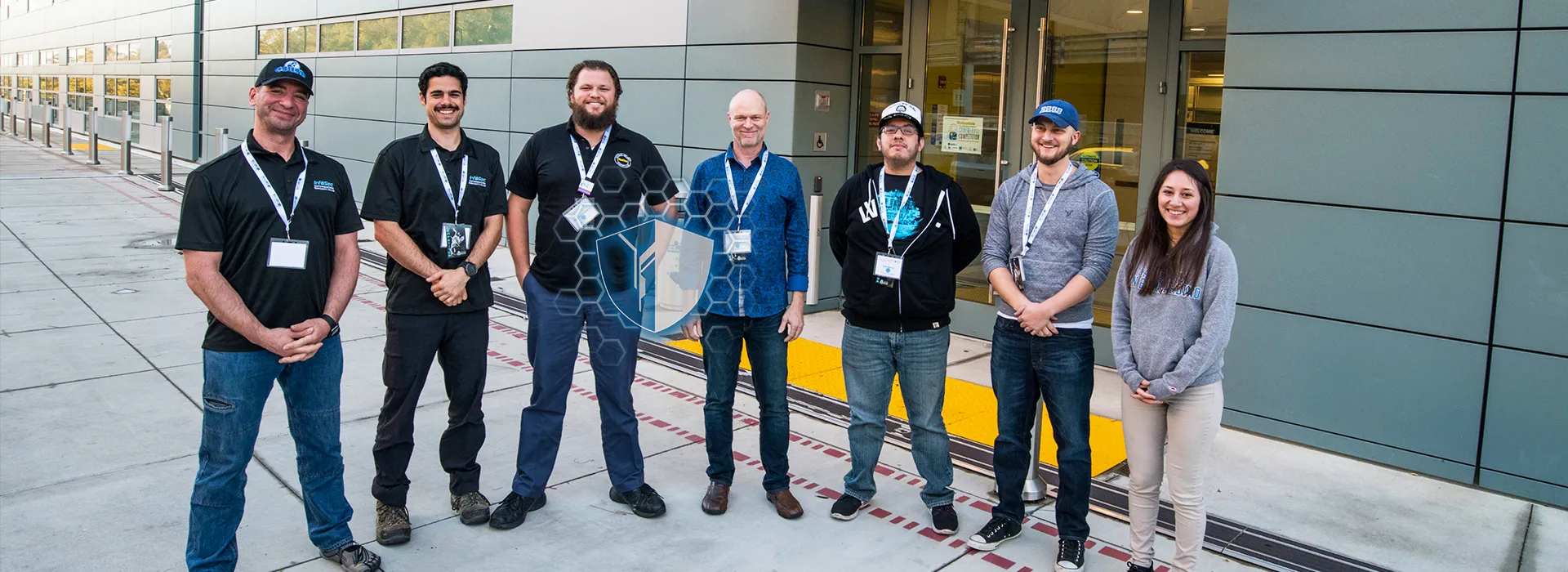Joe Gutierrez Office of Strategic Communication (909) 537-5007 joeg@csusb.edu

Editor’s note: As part of CSUSB’s celebration of National Cybersecurity Awareness Month, the university is showcasing a number of earlier stories highlighting the university’s ongoing work and leadership in the field.
This article was originally published on Dec. 4, 2018.

A team of seven Cal State San Bernardino students competed at the U.S. Department of Energy’s 2018 CyberForce Competition™ at the Lawrence Berkeley National Laboratory, one of seven venues that hosted 62 teams across the nation on Dec. 1.
Representing CSUSB’s cybersecurity program were Danielle Nodine, Michael Eastlake, Cody Hagen, Robert Hancock, Cole Ramos, AJ Najera and Nick Trezza.
They competed against U.C. Berkeley, U.C. Davis and Embry-Riddle Aeronautical University at the Berkeley Lab, as well as other teams – whose members ranged from freshmen to Ph.D. candidates, representing 24 states and Puerto Rico – hosted at other U.S. Department of Energy national labs. In addition to the Berkeley Lab, the Argonne National Laboratory was the lead lab, with participation from Brookhaven National Laboratory, Idaho National Laboratory, Oak Ridge National Laboratory, Pacific Northwest National Laboratory and Sandia National Laboratories.
CSUSB finished fourth in its competition, and 57th overall. The University of Central Florida was named the overall winner.
Sponsored by DOE’s Office of Cybersecurity, Energy Security, and Emergency Response (CESER), the CyberForce Competition is DOE’s fourth cyber defense competition designed to develop the next generation of cybersecurity professionals to help defend and bolster our nation’s critical energy infrastructure and ensure our energy security.
“The energy infrastructure we depend upon as a Nation is under the constant threat of cyberattacks,” said U.S. Secretary of Energy Rick Perry in a video broadcast to competitors across DOE’s national laboratories. “As the Sector-Specific Agency for cybersecurity in the energy sector, guarding against those threats is my highest priority, and this competition is becoming a key element in developing our next generation of cyber warriors.”
The CyberForce Competition challenged college and university students with defending a simulated oil transportation network, a power delivery system, and a high-performance computing system against attacks by experts at the National Labs, the private sector, and the National Guard. The challenge was augmented by anomalies and constraints designed to replicate those commonly found in real-world systems.
“Developing the next generation of cybersecurity experts is a critical part of our mission within CESER,' said Assistant Secretary for CESER Karen S. Evans. “The CyberForce Competition provides the opportunity for us to engage our future defenders and let them know we not only support, but also commend, their interest in a field that is critical to our national security.”
Winners of the 2018 CyberForce Competition:
Overall nationwide winner:
University of Central Florida, Orlando, Florida
Regional winners:
From Argonne National Laboratory:
1st Place – Kansas State University, Manhattan, Kansas
From Brookhaven National Laboratory:
1st Place – University of Maryland, Baltimore County, Baltimore, Maryland
From Idaho National Laboratory:
1st Place – Brigham Young University, Provo, Utah
From Lawrence Berkeley National Laboratory:
1st Place – University of California, Davis, California
From Oak Ridge National Laboratory:
1st Place – University of South Alabama, Mobile, Alabama
From Pacific Northwest National Laboratory:
1st Place – Oregon State University, Corvallis, Oregon
From Sandia National Laboratories:
1st Place – Southern Methodist University, Dallas, Texas
Visit the DOE’s CyberForce Competition website for more information on the event.
Also visit the CSUSB Cybersecurity Center website to learn more about the program.